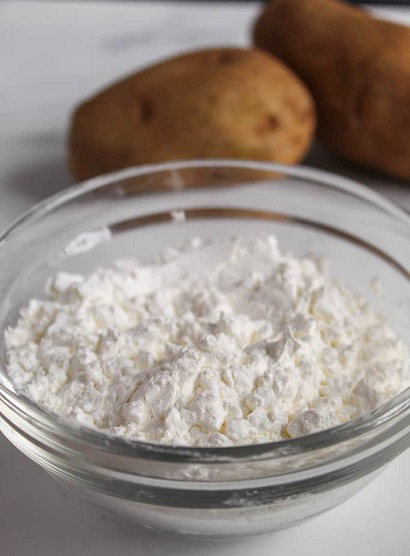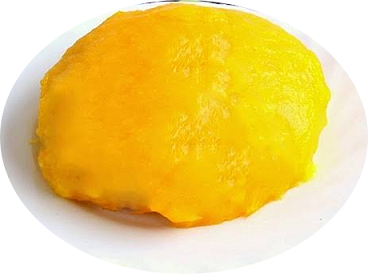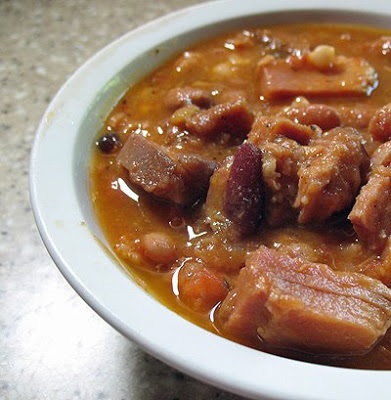Potato starch is a fine, white powder that comes from potatoes. It’s utilized to thicken gel, texturize, and provide crispiness to baked foods, just like other starches. It can also be found in transparent soups, confections, and fillings.
Similarly, Potato starch is derived from the tubers of Solanum tuberosum. Cull potatoes, excess potatoes, and waste streams from potato processing are common sources of starch. The tubers usually have a starch content of 65–80 percent.
Some of the most desirable advantages of integrating potato starch in food are its high water-binding power, low coagulate temperatures, and inclination to make reasonably clear, extremely viscous pastes.
As an ingredient, potato starch may be found in a variety of recipes. It thickens sauces well, may be used as a gluten-free baking ingredient, and may be used as a fried coating.
Potato starch health benefits
Helps to better colon health and improved insulin sensitivity are just two of the potential health advantages of potato starch. It does not contain any gluten.
In the small intestine, potato starch is nearly impossible to digest. It falls under the category of uncooked resistant starch. It can also help you lose weight.
Potato starch substitute
- Cornstarch
- Arrowroot powder
- Rice flour
- Tapioca starch
These are all viable potato starch substitutes.
Potato starch uses
In many applications, potato starch is chosen over corn starch and other starches because of the following characteristics:
- Pasting consistency is excellent, and viscosity is reduced when heated.
- High binding strength
- Greater swellability than cereal starches
In the food business, potato starch is favored based on its paste have high clarity (because to the little amount of lipids and protein) and a neutral taste.
Because of their high moistenable and ideal viscosity, potato starch lactose have an advantage over other starches as an adhesive.
In addition to pie fillings, sweets, chewing gums, and extrusion cooking, potato starch is used as a filtering medium in breweries, where it is used as a filter precoat for filtering yeast from the wort.
Noodles, wine gums, cocktail nuts, potato chips, hot dog sausages, pastry cream and quick soups and sauces, gluten-free recipes, and Asian cuisine are only a few examples of where potato starch are employed. On the other hand, it’s used in pastry to make cakes moist and give them a soft texture, such as sponge cakes.
Sweet potato starch vs. potato starch
In terms of preparation, sweet potato starch is comparable to potato starch. However, because it has different properties than conventional potato starch, it may be used in a variety of recipes.
The texture of sweet potato starch is higher than that of potato starch. It’s also more difficult to dissolve in water than conventional potato starch, thus it’s less effective as a thickener.
Sweet potato starch may be found in the following sorts of recipes:
- Dim sum recipes from China
- Noodles
- Rib and other similar meat marinades before frying or baking
Difference between potato flour and potato starch
Potato starch differs from potato flour in that the former is the extracted starch from crushed potatoes, while the latter is potato flour. Peeling entire potatoes, heating them, drying them, and grinding them into a fine powder are all steps in the process of making potato flour.
In a number of respects, the two goods are distinct. Potato flour is made up of carbohydrate, fiber, and protein, whereas potato starch is only starch. Potato flour has a distinct potato flavor, but potato starch has none.
How to make Potato starch at Home
- First of all, peel the fresh Irish potatoes, thereafter, cut them into a smaller cubes it makes easy blend.
- Secondly, wash and rinse with cold water
- Pour it into a blender and process into a smooth paste. Or You can use a grater to grate the potatoes.
- If the quantity much, you can use the commercial Grinding/milling machine.
- Next is to use a cheesecloth and strain out the starch from the blended potatoes puree
- Add water and rinse the chaff or any remaining paste and ensure there is no more starch in it.
- The chaff can be thrown away.
- Allow the liquid to rest once it has been strained. This permits the starch to settle to the container’s bottom.
- It can take up to 2 – 4 hours depending on the quantity of the potatoes.
- Drain away the water from the bowl after 2 hours, leaving just the white potato starch at the bottom of the dish
- Scoop the thick, flaky starch into a drying pan and dry it in the sun, on low heat in the oven, or in your dehydrator.
- Blend till smooth and sift with a fine strainer once it has dried.
Now you may make your own potato starch
Potato Starch Recipes
It’s great for baking, thickening soups and sauces, and coating meat and fish before frying.



